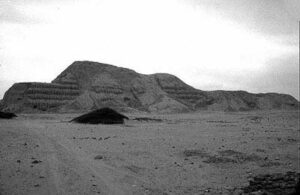Roger Atwood
- 2002

Fellowship Title:
- Loot
Fellowship Year:
- 2002

Lives in Looting
How professional grave-robbers are destroying the past At 23, Robin is a huaquero, a professional grave-robber who has been digging up pre-Hispanic burial mounds known as huacas in his native Peru almost every night since his early teens. He and his buddies loot tombs left by the long succession of cultures that flourished before the arrival of the Spaniards in 1531. They sell the choicest items they find to traffickers, who smuggle most of them out of Peru to sell to dealers in Europe, the United States or Chile. No matter how many international treaties are signed to combat this trade, no matter how many times art dealers protest that they don’t buy looted goods, no matter how many smugglers are arrested, Robin knows that the trade in pre-Columbian artifacts is thriving. It is thriving because collectors want to buy pre-Columbian art that has just come on to the market for the first time. The want fresh loot, and Robin and thousands of looters like him all over Peru, Guatemala, Mexico and other countries with
“The Monkey’s Head”
Does a New Mexico museum have looted and smuggled artifacts in its collection? It’s among the best collections of pre-Columbian art anywhere. In a gallery at the Palace of the Governors museum in Santa Fe, N.M., dimly lit and hushed but for a viewer’s occasional gasp, fourteen shelves hold grinning Mayan deities, gleaming Colombian gold body armor, and about 70 other pieces. Not a single one looks damaged, cracked or abraded. This collection dazzles. In 1998, the FBI seized four pieces from the collection on suspicion they were looted and smuggled from Peru. The four were a gold monkey-head pendant about the size of a fist; a semi-circular golden belt ornament adorned with eight small bells; and twin ear ornaments made of gold, turquoise and shell. All exquisite pieces, and all similar to pieces excavated at Sipán, site of one of the most important archaeological discoveries of the 20th Century and a place known for its well-organized bands of looters. The story begins in 1987 when grave robbers broke into a 1,700-year-old tomb at a

Stopping the Pillage
In Peru, villagers mobilize against the looters who ransack ancient sites A lean man in his 50s with skin burnished from a lifetime working in sugar cane fields, Gregorio Becerra remembers the days when his father used to bring home ancient ceramic pots to their home in the village of Úcupe. Birds, faces, fruits, animals — the whole pantheon of ancient Peruvian pottery stood on their living room shelf, where his father would place the perfectly preserved vessels he and his buddies dug up. “Everyone had a few pots in his house. They were nice decorations,” said Becerra. But sometime around 1990, all that changed. “It became a business. Outsiders came. They came from the city, and you’d see them out in the hills digging up everything they could find. They’d take it all away and sell it,” he said. And so the modern looting industry came to little Úcupe and a hundred villages like it up and down the coast of northern Peru. People who used to excavate pots as backlot hobby or family
